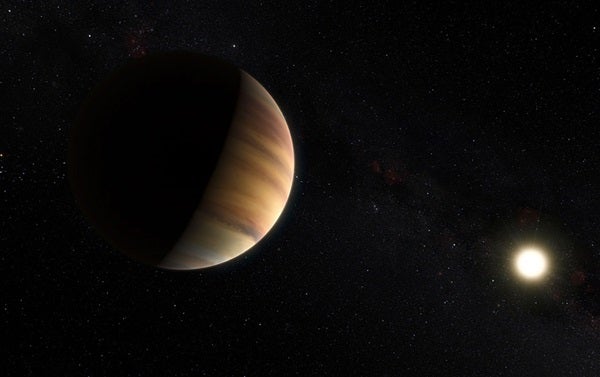The exoplanet 51 Pegasi b lies some 50 light-years from Earth in the constellation Pegasus. It was discovered in 1995 and will forever be remembered as the first confirmed exoplanet to be found orbiting an ordinary star like the Sun. It is also regarded as the archetypal hot Jupiter — a class of planets now known to be relatively commonplace, which is similar in size and mass to Jupiter but orbit much closer to their parent stars.
Since that landmark discovery, more than 1,900 exoplanets in 1,200 planetary systems have been confirmed, but in the year of the 20th anniversary of its discovery, 51 Pegasi b returns to the ring once more to provide another advance in exoplanet studies.
The team that made this new detection was led by Jorge Martins from the Instituto de Astrofísica e Ciências do Espaço (IA) and the Universidade do Porto, Portugal. They used the HARPS instrument on the ESO 3.6-meter telescope at the La Silla Observatory in Chile.
Currently, the most widely used method to examine an exoplanet’s atmosphere is to observe the host star’s spectrum as it is filtered through the planet’s atmosphere during transit — a technique known as transmission spectroscopy. An alternative approach is to observe the system when the star passes in front of the planet, which primarily provides information about the exoplanet’s temperature.
The new technique does not depend on finding a planetary transit and so can potentially be used to study many more exoplanets. It allows the planetary spectrum to be directly detected in visible light, which means that different characteristics of the planet that are inaccessible to other techniques can be inferred.
The host star’s spectrum is used as a template to guide a search for a similar signature of light that is expected to be reflected off the planet as it describes its orbit. This is an exceedingly difficult task as planets are incredibly dim in comparison to their dazzling parent stars.
The signal from the planet is also easily swamped by other tiny effects and sources of noise. In the face of such adversity, the success of the technique when applied to the HARPS data collected on 51 Pegasi b provides an extremely valuable proof of concept.
“This type of detection technique is of great scientific importance as it allows us to measure the planet’s real mass and orbital inclination, which is essential to more fully understand the system,” said Martins. “It also allows us to estimate the planet’s reflectivity, or albedo, which can be used to infer the composition of both the planet’s surface and atmosphere.”
51 Pegasi b was found to have a mass about half that of Jupiter and an orbit with an inclination of about 9° to the direction to Earth. The planet also seems to be larger than Jupiter in diameter and highly reflective. These are typical properties for a hot Jupiter that is very close to its parent star and exposed to intense starlight.
HARPS was essential to the team’s work, but the fact that the result was obtained using the ESO 3.6-meter telescope, which has a limited range of application with this technique, is exciting news for astronomers. Existing equipment like this will be surpassed by much more advanced instruments on larger telescopes, such as ESO’s Very Large Telescope and the future European Extremely Large Telescope.
“We are now eagerly awaiting first light of the ESPRESSO spectrograph on the VLT so that we can do more detailed studies of this and other planetary systems,” said Nuno Santos of the IA and Universidade do Porto.










